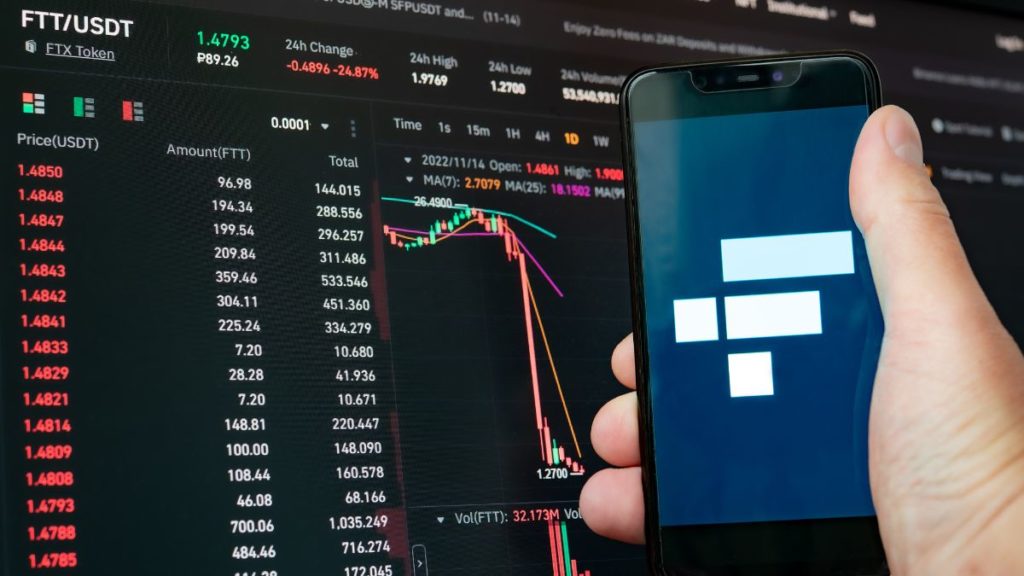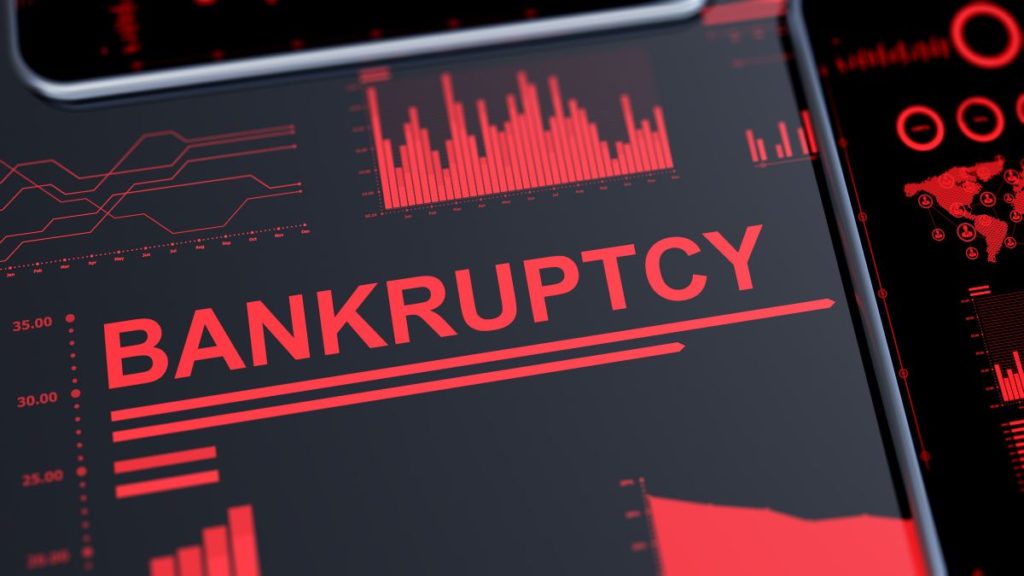
The FTX bankruptcy has made headline news both within the crypto industry and the broader news environment. This is a topic that has been generating a lot of buzz lately and for good reason. FTX Exchange was one of the biggest cryptocurrency exchanges in the world, and its bankruptcy has left investors reeling. In this article, we will explore what led to FTX’s downfall, and discuss what it means for the future of the cryptocurrency market.
The Rise of FTX and Alameda Research
To better understand the FTX bankruptcy in its entirety, it’s important to revisit the rise of these two companies as their relationship was inextricably tied. FTX Exchange was launched in May 2019 by Alameda Research, a quantitative trading firm founded by CEO Sam Bankman-Fried and CTO Gary Wang.
Early on, FTX positioned itself as a crypto derivatives platform offering traders access to popular crypto assets like Bitcoin (BTC), Ethereum (ETH), and Ripple (XRP). This strategy allowed FTX to quickly become one of the larger cryptocurrency exchanges in the world. In July 2021, it had over one million users. This number was expected to grow as the firm began aggressively marketing FTX and launching new features, such as its FTX Token (FTT).
The FTX Token (FTT) will play a pivotal role in the collapse of this exchange and we’ll go over this in detail later on in this article. For now, we can explain FTX Token (FTT) as a cryptocurrency that the firm created to incentivize FTX customers by rewarding them with various benefits such as trading discounts.
Speculators bought the token believing that the value of the FTX Token (FTT) would rise in value as the exchange became more popular. The FTX Token (FTT) also had a burn mechanism where the founders were expected to reduce the supply of FTX Token (FTT) tokens as the months progressed, leading some investors to believe that the FTX Token (FTT) would become more valuable over time.
FTX and Alameda Research were able to rise quickly in terms of popularity and user base due to efficient marketing and the ability to raise capital seamlessly. During the crypto bull run of 2021 and early 2021, capital investments were easily accessible and as one of the leading crypto derivatives platforms, FTX was able to capitalize on this opportunity by raising hundreds of millions in venture capital.
Some can attribute the careless investing style of this frenzied approach from some of the most prominent investors such as Sequoia Capital to the bull market itself. However, in hindsight, SBF’s public persona must have also played a role.
News outlets announced him in high regard. Through his effective altruism, FTX was able to attract more investors who believed FTX would be the next big thing in crypto. People liked his modest approach to living within his means and seemingly caring about animals and the environment. This led to the rise of FTX and Alameda Research to the top of cryptocurrency exchange rankings.

Who Is Sam Bankman-Fried?
Sam Bankman-Fried is the CEO and founder of FTX Exchange. He was an early adopter of cryptocurrency trading, becoming involved in the space back in 2017 when Bitcoin first skyrocketed to $20,000.
Before FTX, he was already a successful entrepreneur and investor, having founded Alameda Research in 2017 and leading the company to become an active participant in the cryptocurrency market. SBF got its start to success by arbitraging the inefficiencies of various crypto exchanges.
For example, Bitcoin could be worth $10,000 on a Japanese exchange but $9,000 on a Singaporean exchange. SBF was one of the first to recognize these inefficiencies and began profiting heavily from them by buying the cheapest Bitcoin and selling it for the highest price on another exchange. Minus the fees, this would amount to a huge profit. Although this is the main consensus on how SBF made his early fortune, there are still questions about how he got his initial capital.
Regardless, FTX was established in 2019 and quickly rose to the top of cryptocurrency exchange rankings due to SBF’s effective leadership and the FTX Token (FTT). He quickly became a legendary figure in the crypto space, amassing a huge following and becoming one of the most recognizable figures. He is also well-known for his philanthropic efforts, donating millions of dollars to various charities.
As a Stanford graduate, he was destined for achievement early on in his young career and with his early success as a trader, the mainstream public viewed him as a respected leader in the crypto industry.
FTX Exchange Goes Mainstream
In 2022, FTX began skyrocketing to mainstream appeal as the firm sponsored legendary athletes and celebrities such as Tom Brady. Along with a Superbowl commercial, FTX sponsored a Miami sports arena, renaming it FTX Arena. This was an appropriate change from American Airlines Arena as 2021 was the year when the flight wasn’t popular but cryptocurrency was.
As a centralized exchange, FTX was able to provide users with the ability to trade FTX tokens (FTT) as well as other cryptocurrencies. The benefit of being a centralized exchange was that the company was able to have a single leader that could quickly make decisions and implement them in the market.
FTX also provided users with a variety of options when trading tokens as it had an impressive selection of products such as futures contracts, options, and perpetual swaps. These products were incredibly popular amongst FTX users as they allowed users to use leverage on their trades and increase potential returns.
Due to this mainstream appeal, many casual crypto traders were drawn to FTX and this caused FTX’s user base to grow exponentially. Unfortunately, this would lead to major losses for depositors in just a few months. Users’ funds being locked in this exchange was a mistake that many first-time crypto users would have to learn the hard way in the coming months.
However, FTX and SBF would have one last run at media glory as the bear market began to crumble other debt-based companies. Debt would prove to be dangerous as collateral was evaporated during the leveraged margin calls. FTX would come in as the saving grace.
FTX Exchange and Alameda Research Buys Out Companies
The main focus of this article is around FTX Exchange and Alameda Research, however, the downfall of a few major crypto players also plays into the story of FTX Bankruptcy. FTX Exchange and Alameda Research were able to capitalize on the opportunities of other exchanges’ failures due to their leverage in the crypto markets.
FTX Exchange and Alameda Research took over bankrupt companies as they were able to offer a solution that other companies couldn’t. For instance, FTX struck a deal with BlockFi which allowed it to provide the former with a $400 million revolving credit facility that included an option to purchase BlockFi for $240 million. However, the firm would inevitably face bankruptcy just a few months later as its new parent company also files for bankruptcy.
At the time, news outlets praised SBF for “saving” BlockFi and FTX seemed as if it was bulletproof. They were wrong; FTX filed for bankruptcy in the winter of 2022 due to insolvency. SBF seemed to have crafted his public perception since the start and many journalists overlooked his companies’ health. As a private corporation, they were never required to release financial statements, and FTX was able to maintain the secrecy of its security while expanding rapidly.
Collapses of insolvent entities are inevitable. This is because FTX was unable to back up its promise of safety. FTX suffered losses due to the lack of liquidity, a necessary component in trading cryptocurrency. However, there was one catalyst that brought the crypto behemoth to its knees and the signature that would end the charade would be CZ.
The Binance Power Move
After a leak of FTX’s balance sheet was revealed, CZ noticed that the firm was insolvent. The Binance founder threatened to liquidate all of its holdings of FTX Token (FTT) as a result of this finding. This started in early November and those that received the warning only had a few weeks to pull their money out of FTX as the FTX platform was officially shut down in early December of 2022. Binance first acquired a substantial amount of FTX Token (FTT) after prior dealings with the FTX founder.
CZ swiftly removed the worthless crypto from its balance sheet, dumping it into the market which caused a snowball effect of other investors doing the same. FTX was unable to handle the massive sell-off and had to proceed with bankruptcy proceedings. This is because FTX used FTT as a form of collateral to access more investor capital. But when the price of the collateral dropped dramatically, a margin call was triggered, and FTX was unable to pay out.
SBF continues to blame this result due to a lack of liquidity but CZ and the rest of the crypto community are seeing this whole debacle as fraud and malicious management of users’ funds. SBF and his team were unable to salvage the company or its reputation due to this power move from CZ. FTX Bankruptcy marked a significant moment for the crypto industry as it showed that even though exchanges could be popular and profitable, they could still fail without proper management and oversight.

The Collapse of FTX Exchange
Unfortunately, FTX’s rapid growth was not enough to sustain the company. FTX bankruptcy occurred on November 11th, 2022. The exact details of why FTX collapsed remain unclear, but the company likely overextended itself with its fast-paced expansion.
Collateral backed by non-tangible value in the FTT Token was also a major cause to blame for FTX’s downfall. Ultimately, the FTX bankruptcy came as a result of the company creating a token out of nothing and using that as collateral to borrow more funds. FTX was unable to pay back the debt when it found itself unable to liquidate its FTT tokens, leaving FTX insolvent.
It was also later found out that wash trading was involved. This is when FTX would buy and sell its own tokens to inflate the trading volume and give users the illusion of liquidity. With many subsidies and ‘sister’ companies, SBF was able to create a smokescreen for FTX’s financials, keeping FTX hidden from public scrutiny.
What Can We Learn From The FTX Bankruptcy?
FTX was valued at 32 billion just a few months ago back in January of 2021. Now, it’s bankrupt. SBF is facing lawsuits and depositors are so far left without luck as their funds have been completely wiped out. FTX’s collapse is a reminder to everyone that the crypto space is still vulnerable and caution must be exercised when dealing with it. It’s a reminder that nothing is too big to fail, not even FTX. FTX bankruptcy stands as a warning to other crypto exchanges and investors alike, to be more careful when dealing with crypto assets.
As the FTX saga shows, even when it looks too good to be true, it can be. FTX’s collapse stands as yet another example that crypto is still incredibly volatile and its legal framework is still underdeveloped. With FTX bankruptcy, many are taking this as a lesson to be more careful when dealing with crypto assets. Remember that if you do not have ownership of your private keys, you do not have control of your funds. It is important to safeguard yourself and be aware of the risks associated with investing in crypto.
The FTX bankruptcy was a lesson to the entire crypto industry about the dangers of over-leveraging and unregulated business practices, and it is a reminder of the importance of regulation in the crypto space. Despite the market, effective altruism, and hype surrounding FTX, the exchange was unable to manage users’ funds responsibly.
The Effects of the FTX Bankruptcy on the Cryptocurrency Market
The FTX bankruptcy has had a significant impact on the cryptocurrency market. For one thing, the collapse of all of FTX’s newly acquired companies was inevitable. As with any contagion, a crypto contagion has been spreading throughout the crypto markets, affecting multiple projects and altcoins. FTX Bankruptcy has also reignited the bear market in the cryptocurrency space as investors are worried about investing in crypto projects, exchanges, and assets.
In addition, FTX’s collapse has had implications for the trustworthiness and reliability of not just exchanges but crypto in general. This could set the entire industry back as traders and investors become increasingly wary of the risk associated with investing in crypto. The FTX bankruptcy has caused a ripple effect throughout the industry, raising questions about the future of crypto and its sustainability.
For exchanges that survived this crypto contagion, there is one less competitor in the market, which could potentially mean more fees for those exchanges. FTX’s collapse has also prompted other crypto exchanges to develop enhanced security protocols, audit reports, and insurance policies to protect users’ funds. FTX’s bankruptcy could also lead to more stringent regulatory measures in the crypto space, making the industry more secure and stable for users.
Despite the negatives of this dreadful FTX bankruptcy, the crypto industry may move forward with these insights and rebuild the trust FTX has broken. At its core, FTX’s bankruptcy is a lesson to the industry that it must remain vigilant in its efforts to protect users and their funds. FTX will be remembered as a blip in the crypto industry, but its impact on the market will be felt for years to come.

The Story Continues…
The ultimate decision on SBF’s fate is still in limbo as FTX bankruptcy proceedings continue to be contested in court. FTX’s collapse has highlighted the importance of due diligence and risk management when dealing with crypto investments, and it serves as a stark reminder that the crypto markets are still largely unregulated.
In the wake of FTX’s fall, many other exchanges have stepped up their security measures, auditing processes, and insurance policies to protect users from similar tragedies. Since then, celebrities that endorsed FTX have distanced themselves from the project.
The FTX bankruptcy is an important lesson in understanding that one should always do thorough research before investing in any asset class, especially in an unregulated space like cryptocurrency.
While FTX served as a cautionary tale, the crypto industry is still on its course to becoming a legitimate asset class. FTX’s collapse has allowed us to take necessary steps to protect ourselves and our investments by ensuring that exchanges are reliable, secure, and compliant. Only time will tell how this will play out but the downfall has left the industry in ruins. In times like these, we’ll see who are the leaders in this industry and who just jumped in for the ride.
How To Defend Yourself From This Type of Negative News
The FTX bankruptcy happened quickly. To make sure you don’t miss any important news in the future, it is important to have access to up-to-date and reliable information. Algory has an effective crypto news aggregator tool that can help you make sure you’re always aware of the latest developments in the crypto world. This tool is essential as this industry moves fast and missing out on important news can lead to severe losses.
With the help of Algory’s crypto news aggregator, you can stay informed about the latest developments and act accordingly. Make sure to check it out here. If you are looking for a guide on how to use this news aggregator and make the most of it, check out our blog post here.
Final Thoughts
The FTX bankruptcy serves as a reminder to all crypto investors and traders that the markets are still largely unregulated. It is important to do thorough research and understand the risks associated with crypto investing before entering any position.
Disclaimer: The content provided in this article is for informational purposes only and should not be construed as investment advice. It is important to remember that investing in cryptocurrency involves significant risk and you should never invest more than you can afford to lose. Algory does not provide any financial advice and the content provided in this article should not be interpreted as such. Please consult a financial advisor before making any investment decisions.

